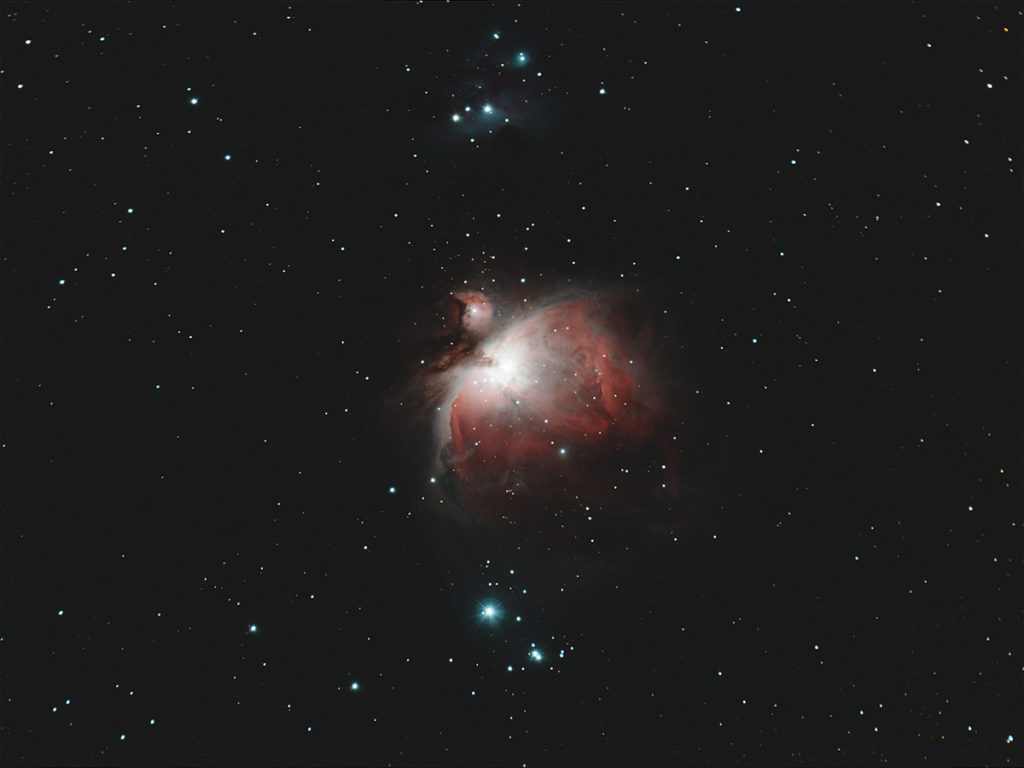
Telescope: Meade SN6 Comet Tracker at f/3.6, Orion Atlas EQ-G
Camera: Full Spectrum Modified Nikon D5300, Baader Mk III MPCC
Filter: Orion Imaging Skyglow Filter
Guide scope: Orion 50mm, ZWO ASI120MM mini
Exposure: 62x30sec, ISO 200, saved as RAW
Darks: Internal (Long Exposure Noise Reduction On)
Flats: 32×1/10sec, Tee shirt flats taken at dusk
Average Light Pollution: Red zone, Bortle 8, poor transparency, bright moonlight
Lensed Sky Quality Meter: 18.1 mag/arc-sec^2
Stacking: Mean with a 2-sigma clip.
White Balance: Nebulosity Automatic
Software: Backyard Nikon, Deep Sky Stacker, Nebulosity, Photoshop
I like how this field shows how the Great Nebula is bracketed by NGC 1977 to the north and NGC 1980 to the south. Forming the Sword of Orion, this is a wonderful region to explore with a small telescope. Although visually the nebula shows a soft gray, it includes a wealth of fine detail. This is also a very rewarding region to photograph and even short exposures can show the beautiful range of colors. The red of the Great Nebula is the emission of hydrogen gas set aglow by hot young stars within the nebula, while the smoky gray/blue of M42 and the beautiful soft blue of NGC 1977 is starlight reflecting off of interstellar dust while the dark lanes are veils of dust in the foreground.
Recent Comments